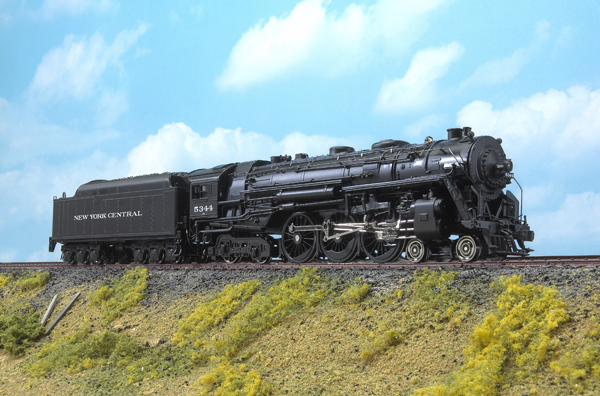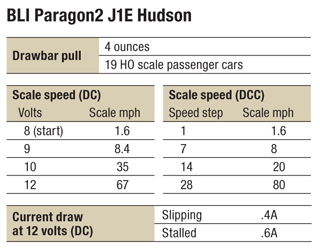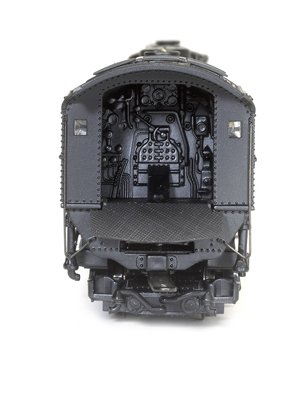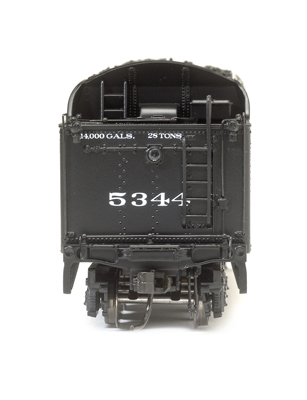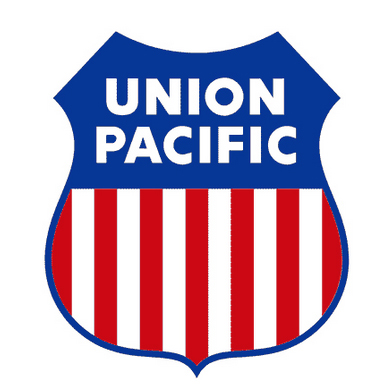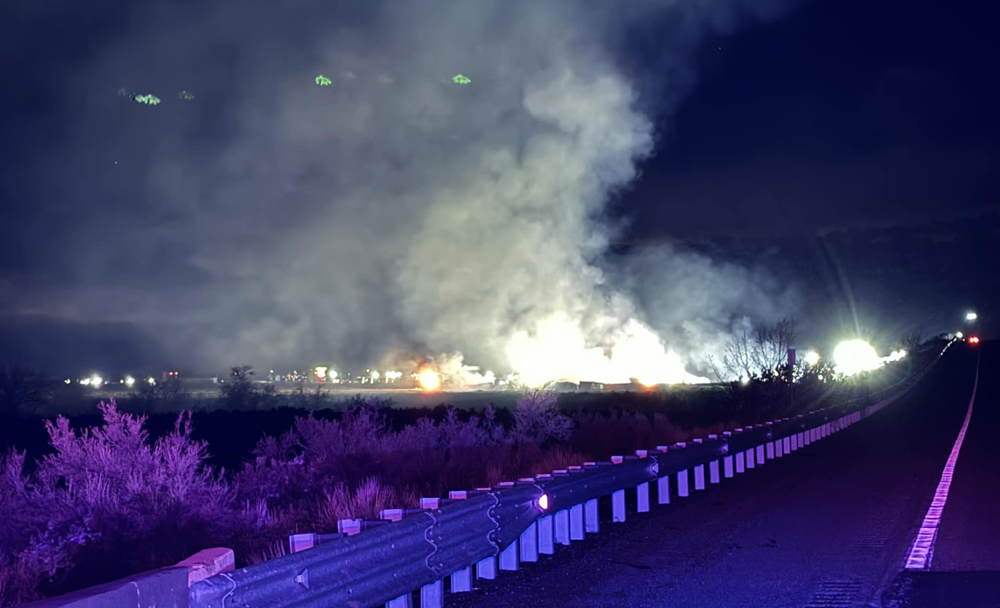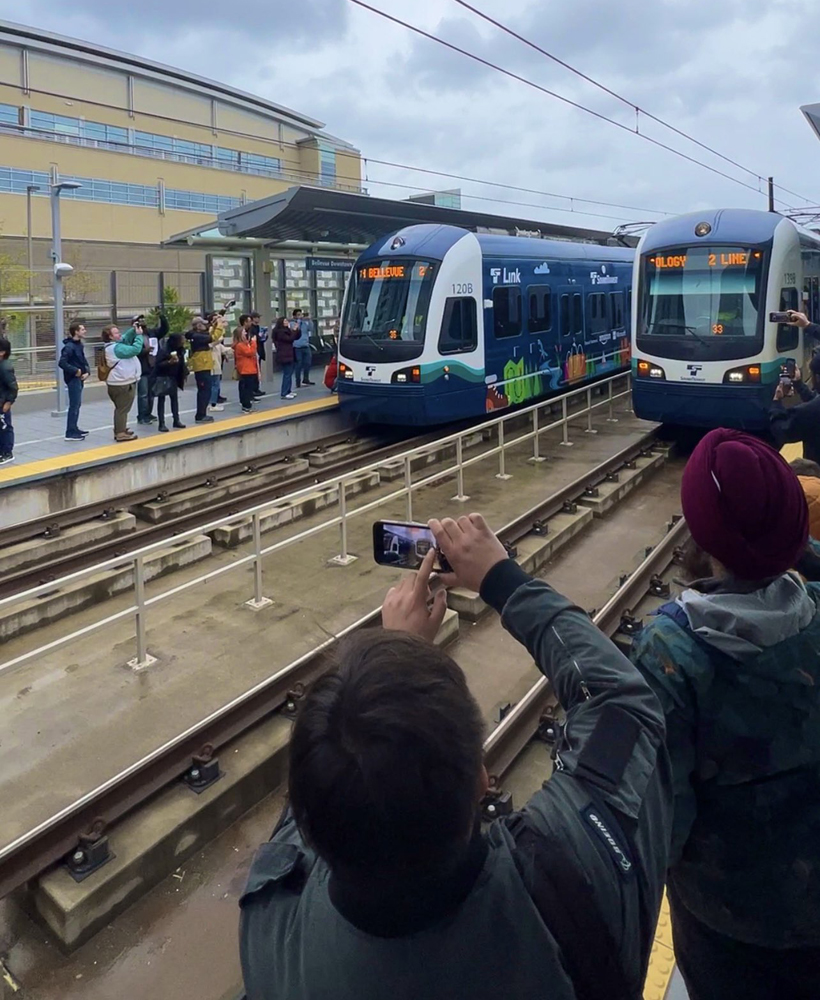An NYC thoroughbred. Beginning with the J-1 in 1927, 4-6-4 Hudsons became the premier passenger locomotives on the New York Central. The prototype for our review sample, class J-1e no. 5344, was built by the American Locomotive Co. in 1931. The engine was streamlined in 1934 to haul the Commodore Vanderbilt and again in 1939 to lead the Twentieth Century Limited. The NYC removed the locomotive’s streamlining in 1945, and no. 5344 ultimately met the scrapper’s torch in 1954.
Sound and smoke. Both sound and smoke effects are available to DC and DCC users of the J-1e. On DC layouts sounds are limited to background effects (such as the air pumps and steam releases) when the model is at rest, and chuffing sounds synchronized to the motion of the drivers when the model is under way. I also triggered the sound of squealing brakes when I decreased the throttle abruptly, and could ring the bell and blow the whistle, using our power pack’s direction switch.
Broadway Limited also sells the DC Master analog DC controller ($39.99) to be wired between the power pack and the track to offer easier user control of the bell and whistle. You can also use the AUX button on the controller to turn the smoke unit on or off. A slide switch inside the locomotive cab controls the smoke unit.
In DCC, function 7 controls the smoke unit. More noticeably at slow speed, the puffing smoke is synchronized with the motion of the drivers, as is the correct sound of four chuffs per driver revolution. At high speed, the model pours smoke from the stack, leaving a visible white cloud that hung over the trailing coaches as I ran the engine on our layout.
Many other user-triggered functions and programmable features are available when running the model on a DCC layout. The bell and whistle sound correct, according to recordings of Hudsons that I’ve heard. User-controlled effects also include the injector, the stoker engine, and the sound of slack being let out of the couplers
of passenger cars in tow.
I especially like the ability to easily adjust the intensity of the chuffing sounds, using function 5 (increase chuff intensity) or function 6 (decrease chuff intensity). With these two functions you can simulate the sounds of a locomotive starting out with a heavy load or “drifting” as it runs light or heads downgrade.
When you push function 14 you’ll hear the conductor call out, “All aboard!” and when you press functions 15, 16, or 17, you’ll hear an engine crew member announce “Yeah, it’s green,” or “Highball” or “We’re lined up through the main, let’s pull out.”
Other effects are the same as on the Paragon2 diesels, and I find them less useful. These include various industry, city, or farm sounds that are distracting coming from a locomotive. I think these effects are best left to a background sound unit.
One of the most interesting features of the Paragon2 decoder is the ability to record what BLI refers to as a “macro,” where the engine will run an automated operating sequence. Although this sequence is recorded using function 27 and played back using function 26, you can remap these functions to any function key on your DCC cab by following the included instructions.
With this macro feature you can have the Hudson leading a passenger train around your layout automatically making stops or performing other moves, while you work a yard or run another train.
In DC, as with other sound-equipped models, the Hudson requires a lot of voltage to get going, but accelerated smoothly throughout its speed range. In DCC the model did well in our 28-speed-step tests, but speed control at slow speed is more precise using 128 steps. The 80 scale mph top speed is close to that of the prototype.
Equipped with two traction tires on its third driving axle, the BLI Hudson has plenty of power to haul a full HO scale passenger train. A user-installed non-traction tire set is also included.
One correction to the running gear that BLI has made since the 2002 release is that both eccentric cranks now correctly lean forward when at their lowermost position. The pilot wheels would look more realistic if they were painted black.
The locomotive and tender body shell and other details are primarily plastic. All molded details are sharp and their placement matches prototype photos. Most of the model’s piping and other details, like the throttle linkage, whistle, and bell, are separately applied.
The cab interior also has a highly detailed backhead and includes two painted crew figures.
The BLI class J-1e Hudson was already a great-looking model when it was first released seven years ago. Now with its new Paragon2 DCC sound system and realistic smoke, it looks even better hauling an HO scale train of New York Central’s best varnish.
Price: $349.99
Manufacturer
Broadway Limited Imports
4 Signal Ave., Suite C
Ormond Beach, FL 32174
www.broadway-limited.com
Road names: New York Central J-1e nos. 5344, 5312, 5327, 5343, 5391, 5396 (Big Four), Toledo, Hamilton & Buffalo. Undecorated version also available. J-1d: New York Central nos. 5277 and 5278. Roman or Gothic lettering versions. See BLI Web site.
Era: 1931 to early 1950s
Features
Dual downward-facing speakers in tender
Electrical pickup on four drivers and all tender wheels
Engine and tender weight:
1 pound 6 ounces
Five-pole skew-wound can motor with brass flywheel
Minimum radius: 18″
Paragon2 dual-mode DCC sound decoder





